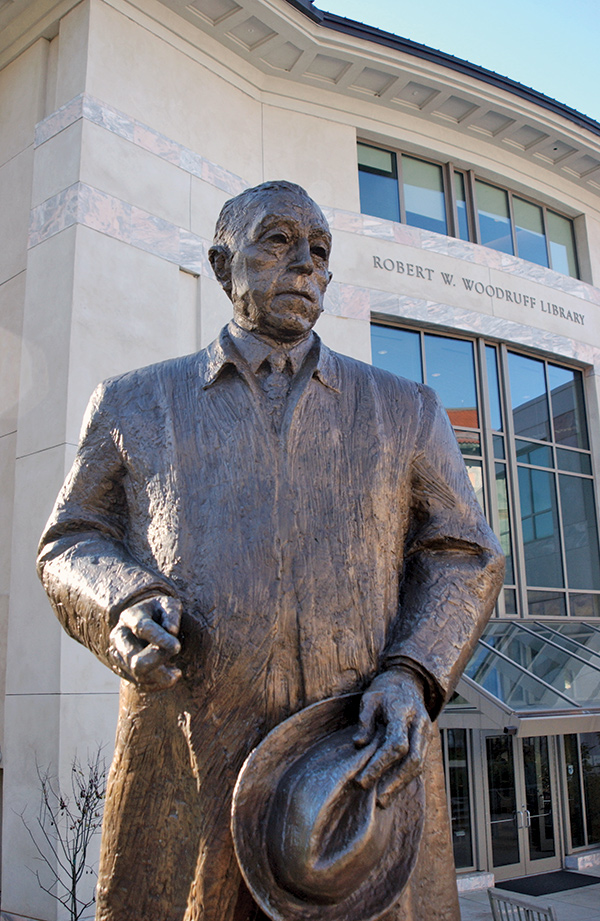The Traveling Mr. Woodruff

Emory Photo Video
Each day, hundreds of students, faculty, and visitors to Emory pass within a few feet of Robert W. Woodruff, immortalized by the familiar bronze statue that stands in front of the library also bearing his name. Most take for granted that the likeness of one of the university’s most prominent benefactors would be right at home in such a central spot.
What many probably don’t know is that this is not the Woodruff statue’s original home; in fact, the sculpture is probably one of the only pieces of public art in Atlanta to have been unveiled not once, but twice.
The surprising history of the sculpture was recently brought to the attention of Emory Magazine by Atlanta high school teacher John Stenger, who is writing a book about his late stepfather, Henry Setter.
Setter was an early protege of William Thompson, a professor of sculpture at the University of Georgia from 1964 to 1989. Stenger’s research revealed that Thompson was a highly influential instructor who inspired hundred of students over the years.
He also was a noted sculptor whose talent for large-scale portraiture earned him a number of important official commissions in Georgia. In the late 1970s, the Coca-Cola Foundation engaged him to create a statue of Woodruff, which was installed on the front lawn of the High Museum of Art and unveiled in September 1983 with a high-profile celebration attended by ninety-three-year-old Woodruff himself.
Longtime Emory administrator Boisfeuillet Jones 34C 37L 82H, then president of the Woodruff Foundation, told the crowd of Atlanta luminaries that “this enduring bronze will remain as a reminder of the complex and humane personality so beloved for his concern of his fellow man.”
A decade after Woodruff’s death, in 1995, the statue was removed to a warehouse to be cleaned and restored. Thompson, who died that same year, never knew that his statue would not return to its original location.
“Thompson’s work had not been entirely popular among some of Woodruff’s siblings,” Stenger writes. “In his sculpture, the corporate chieftain is caught in a contemplative moment. Some felt he looked too pensive.”
The Thompson statue remained in a dark warehouse for several years, until its lonely fate came to the attention of William Fox 79PhD, then senior vice president for institutional advancement. Fox reached out to arts center officials, who quickly agreed to “loan” the sculpture to Emory. “We were thrilled to death to obtain it,” Fox said.
In 2000, a second unveiling ceremony brought the generous Mr. Woodruff into the light once more. Now a fixture at the heart of campus, the statue is well maintained, regularly decorated by students during Emory’s Spirit Week and Homecoming celebrations, and generally surrounded by the footfalls and chatter of a vibrant university community.
A small plaque at the base of the statue pronounces the work “on generous loan from the Woodruff Arts Center.” But one can’t help but wonder if both Woodruff and Thompson would not be pleased to consider the statue rightfully at home. Woodruff may look serious and inscrutable in Thompson’s rendering, but sit for a while before him on a sunny day, and you might just imagine you saw a bronze eye wink.





